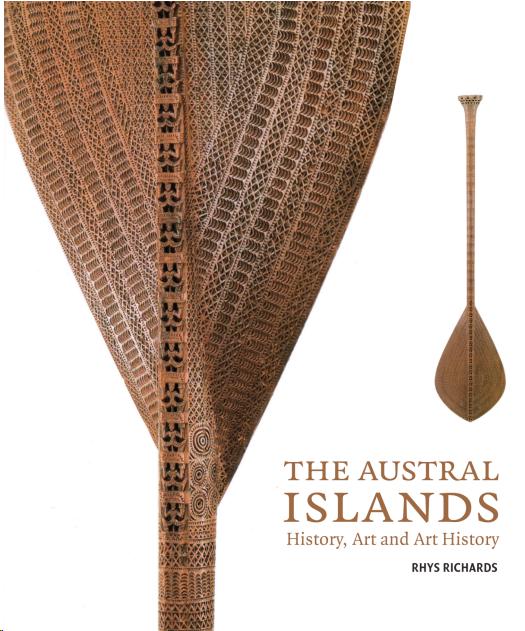The Austral Islands: History, Art and Art History
The Austral Islands: History, Art and Art History
Rhys Richards, designed by Anna Brown. 2012 Paremata Press. 236 pages, 145 illustrations (30 in colour. ISBN 978-0-473-18886-3May be ordered from Paremata Press 73 Seaview Road Paremata, Wellington N.Z. or by Email : mrhys@paradise.net.nz
Blurb:
The Austral Islands: History, Art and Art History is in three parts. Part I is a sequence of comments made by the earliest foreign visitors, mainly using their own words. These historical extracts are the raw material of anthropology, but without its methodology and vernacular. This should enable today's Islanders,and others, to get to know something of the pre-colonial heritage of the Austral Islands.
Part II provides a selection of thirty colour photographs of early Austral Island arts now in the British Museum, the Pitt Rivers and other museums and private collections. Along with over 100 black and white illustrations in the margins of Part I, these larger colour pictures should help convey the flair, creativity, beauty and impact of the artifacts that remain.
Part III provides a few personal comments and art history essays about specific classes of artifacts, such as the famous exquisitely carved 'paddles' and the rare tapa cloth, and contexts within the wider Pacific.
Another book by Rhys Richards is here.
Mini Review
This is a POP page.
|
Richards has assembled a series of essays here focusing on art history. The extracts from visitors and a few residents records are intriguing and would bear more commentary than are given here. They do however emphasise how disease and colonial period domination from the Society Islands rapidly removed the original cultures of these islands. There are some intriguing snippets on the trade in the distinctive Austral carved artefacts, some recorded and some by inference that some of these were very early exports to the Societies, a trade that continued with some items made just for trade.
While Part II is headed art and artefacts Part 1 actually has more illustrations. Altogether the book has a fine corpus of Austral's art. As a series of essays there is some repetition, some diagrams and illustrations appear in more than one section and one illustration twice in one section for no obvious reason. A commercial publisher may have addressed these but they are small matters overall. The concluding essays include contributions comparing Austral and Cook Island Art, identifying Austral's tapa, 1A adzes and comparisons to the Kaitaia lintel. These round out the book well and add to its interest to those with a more general interest in Polynesian art and history.
